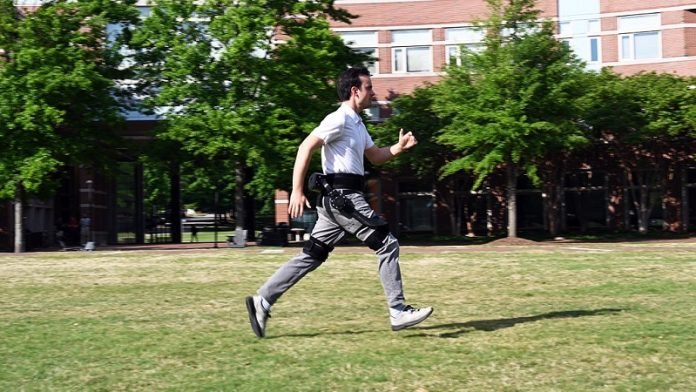
Researchers have developed a new method that uses artificial intelligence (AI) to train robotic exoskeletons to help users save energy while walking, running, and climbing stairs.
This breakthrough combines AI and computer simulations to create exoskeletons that can autonomously assist users without the need for extensive training.
Hao Su, an associate professor of mechanical and aerospace engineering at North Carolina State University, explains, “This new machine-learning framework bridges the gap between simulation and reality, allowing wearable robots to improve human mobility and health.”
The study, published in the journal Nature, showcases the potential of exoskeletons to enhance human performance, though their development has been slow due to the need for long human tests and complex control systems.
The innovative approach allows the AI in the exoskeleton to learn how to assist with walking, running, or climbing stairs through computer simulations. This eliminates the need for users to spend hours training the device. “The key idea is that the embodied AI in a portable exoskeleton learns how to help people move in a simulation, without requiring any experiments,” says Su.
The researchers focused on improving the autonomous control of these AI systems, which are integrated into physical robots. The goal was to teach robotic exoskeletons to assist able-bodied people with various movements.
Typically, users have to train an exoskeleton to understand how much force to use and when to apply it. This new method allows immediate use of the exoskeletons, making science fiction a reality.
Shuzhen Luo, the first author of the paper and a former postdoctoral researcher at NC State, adds, “We have developed a way to train and control wearable robots to directly benefit humans.” Luo, now an assistant professor at Embry-Riddle Aeronautical University, highlights the energy savings observed in tests with human subjects.
Participants used 24.3% less metabolic energy when walking with the exoskeleton, 13.1% less energy when running, and 15.4% less energy when climbing stairs.
Su emphasizes that these energy reductions are compared to the performance of users without an exoskeleton, providing a true measure of the energy saved. While the study focused on able-bodied individuals, the method also applies to exoskeletons designed to help people with mobility impairments.
“Our framework offers a scalable strategy for developing and adopting various assistive robots for both able-bodied and mobility-impaired individuals,” says Su. The team is now testing the method with older adults and people with neurological conditions like cerebral palsy. They are also exploring its potential to improve robotic prosthetic devices for amputees.
The study, “Experiment-free Exoskeleton Assistance Via Learning in Simulation,” is published in the journal Nature.



